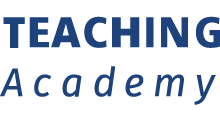- Home
- Publications
- Message from the Academy Chair
Message from the Academy Chair
Kumaralingam Amirthalingam
Chair, NUS Teaching Academy
Faculty of Law
Teaching – The Heart of a University
The quality of teaching at universities – particularly research-intensive universities – is a global hot topic. Conferences on teaching and learning in higher education are sprouting like mushrooms on a rainy day. Universities are rethinking promotion and tenure – and to a lesser extent – hiring policies and criteria in order to recognize and reward teaching excellence. The inaugural result of the United Kingdom’s Teaching Excellence Framework (TEF) recently generated concern as many “top” universities did not fare well. While controversial, TEF nevertheless has three valuable takeaways. It evaluated teaching excellence at the institutional, not individual level; it focused on the impact of teaching on students; and it tied teaching quality to institutional funding.
In this context, how should NUS ensure that it continues to deliver the outstanding education that its students have come to expect?
Let me pose three questions:
- What should be the relationship between a university’s strategy to foster research excellence and its strategy to foster teaching excellence?
- What is the relationship between effective teaching, scholarly teaching, and scholarship of teaching and learning (SoTL)?
- Is there a relationship between rewarding excellent individual teachers and ensuring that students receive a good institutional educational experience?
As universities around the world try to address the challenge of ensuring that students receive a good education, it is vital that policies and practices are driven by evidence, and not assumptions. In an illuminating article, MK Potter & EDH Kustra, “The Relationship between Scholarly Teaching and SoTL: Models, Distinctions, and Clarifications” (2011) 5(1) IJ-SoTL Art 23 put this issue centre-stage:
“The assumption that scholarly teaching and SoTL are directly related to improved teaching, and thus improved learning, has taken hold of higher education and is now shaping practice… If the foundational and motivational assumptions behind these practices are not warranted, our reflexive propagation of them must be questioned.”
In laying bare some of the contradictory claims in the literature about SoTL and scholarly teaching, Potter and Kustra “delineate the relationship between scholarly teaching, SoTL, and effective teaching,” reminding that an effective teacher need not be a SoTL practitioner and that a SoTL practitioner is not necessarily a good teacher, or even a teacher at all. The hierarchical approach of moving from effective teaching to scholarly teaching to SoTL is rejected for reasons familiar to many educators today: “[T]he conflation of SoTL and scholarly teaching further delegitimizes scholarly teaching while SoTL rides the coat-tails of the established domain of respectability: research. Thus, the old paradigm is reinforced.” Teaching is relegated further into the background.
It has become popular to deride the teacher as “Sage on the Stage” and to celebrate the teacher as “Guide by the Side”. All good, as long as the teacher does not become the Hack at the Back! Effective teaching, scholarly teaching and SoTL all have a place in their own right, but without hierarchy … or even as firsts among equals. One should not have to add the epithet of “scholarly” to teaching in order to accord value to teaching. That is not to say that a scholarly approach to teaching is not necessary or essential in higher education. The Academy as an institution, and Fellows as individuals, will naturally engage with SoTL and the broader educational literature; indeed, these are invaluable to enhancing the teaching and learning environment, developing the curriculum, and fostering pedagogical innovation. The literature is also essential to self-critical awareness and promoting evidence-based strategies, as Potter & Kustra demonstrate.
At NUS, it is evident that teaching and learning are taken seriously. In addition to the Academy, the Centre for Development of Teaching and Learning (CDTL) and the Centre for Instructional Technology (CIT), we now have the Institute for the Application of Learning Science and Educational Technology (ALSET), the Centre for Future Ready Graduates (CFG) and the School for Continuing and Lifelong Education (SCALE). The Academy will continue to organise Teaching and Learning Club (TLC) sessions to engage educators, administrators and students through dialogue and roundtables. We are also exploring better ways to foster a culture of teaching mentorship at NUS. Further, the Academy will reach out directly to the community through roadshows to share ideas and engage educators on the ground. We hope to have the first roadshow at the Faculty of Arts and Social Sciences in the first semester of AY2017-2018.
We will continue our two flagship events. The Distinguished Lecture and Workshop, presented in May 2017 by Dr Steve Wheeler of Plymouth University, focused on social media and higher education. The Masterclass Week with Professor Diana Laurillard of University College London explored the future of higher education in the digital world. I invite you to view the lectures and workshops on the Academy’s website at https://www.nus.edu.sg/teachingacademy/events/masterclass/. A new initiative the Academy plans to launch is an Annual Teach-in. This would involve educators from across NUS coming together to share their teaching and learning experiences and innovations through short presentations.
I invite all of you at NUS to contact the Academy with ideas on teaching and learning that you may have and to offer your contributions to some of our initiatives. Let me end by thanking the Provost’s Office and CDTL for their support, the management team at the Academy, and Fellows from across the university who have come together to create a multi-disciplinary community that has heart, soul and mind.

